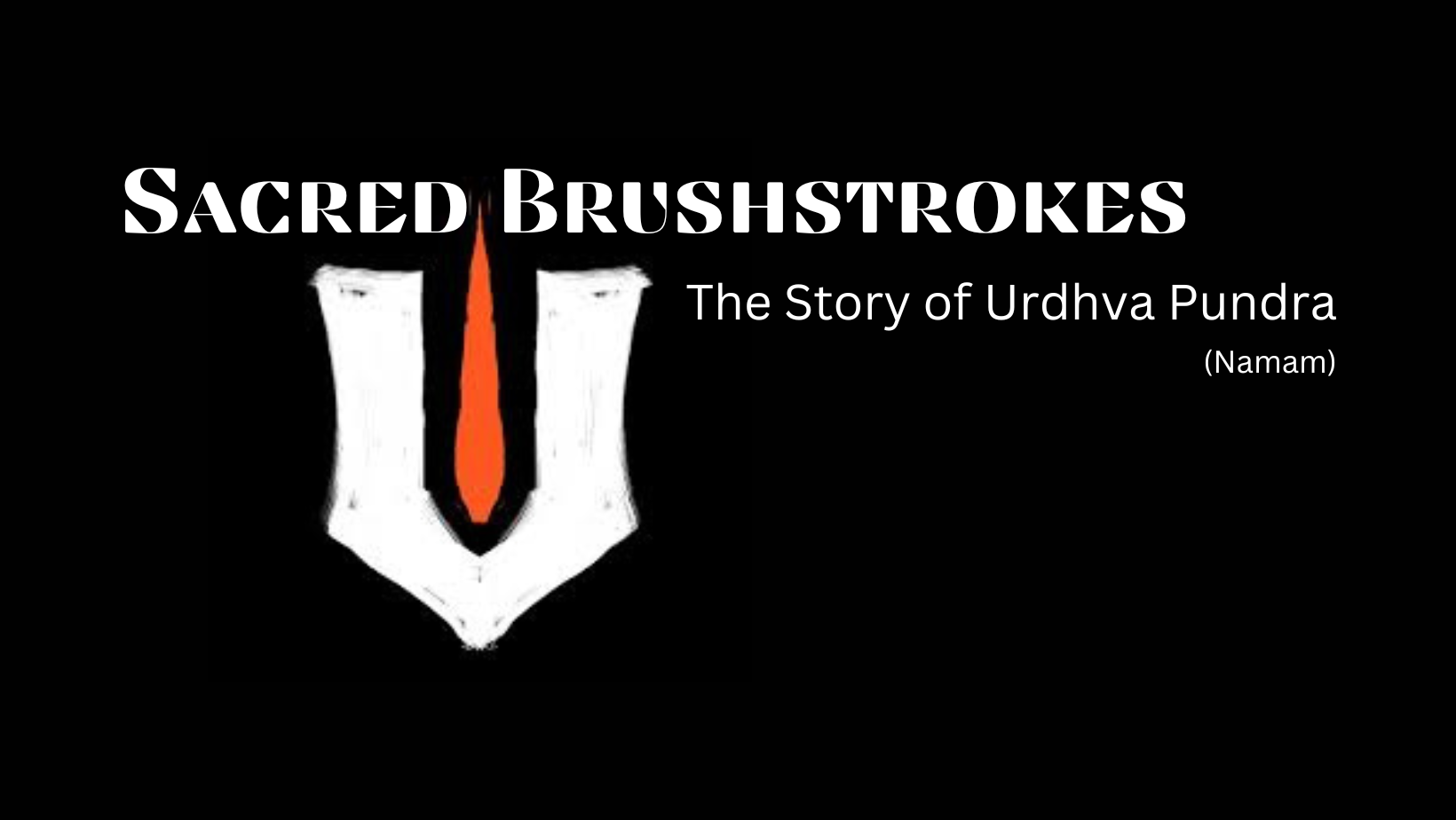
Close your eyes and let the ancient verses of the Padma Purana guide you through the mystical journey of the Urdhva Pundra. Picture the thousand-edged disc illuminating the path, and the bright metal plates glistening with divine grace. It is a mark, not merely of ritualistic significance but a key to unlocking the spiritual realms. As the noble ones don this mark, singing hymns that resonate in the heart, they reach heights beyond the highest, eternally embraced by Vishnu.
The Vasudeva Upanishad, a treasure trove of Vaishnava wisdom, paints a canvas of interpretations for the three vertical lines of the Urdhva Pundra. They are a reminder of Vedic scriptures, the three worlds, the sacred syllables of Om, the states of consciousness, the realities of Maya, Brahman, and Atman, and the three bodies - Sthula, Sukshma, and Karana. Each line etches a tale of cosmic significance on the devotee's forehead, a map leading them to the divine.
As the Skanda Purana whispers its secrets, we learn that the Urdhva Pundra is more than a mark; it's a language of devotion. Permanent marks of conch and discus grace the arms, and the distinctive V-like form of the Urdhva Pundra becomes a sacred signature. With each mark, reciting the twelve names, the devotees bow in reverence, a symphony of devotion echoing in the cosmos.
Now, let's venture into the diverse landscapes of Vaishnava traditions, where the Urdhva Pundra dons different hues and shapes.
In the Sri Vaishnavism tradition, the tilaka takes the form of the namam or sricharanam. Men wear it with outer lines representing the feet of Narayana, and a red line in the middle for his consort, Lakshmi. A subtle curvature on the nose bridge signifies their denomination, a unique fingerprint of surrender to the divine.
In the Iyengar community of South India, two forms of tilakas, Tiruman and Sricharanam, embellish foreheads. The Tenkalai namam forms a Y, with vertical white lines and a red line representing Lakshmi. Meanwhile, the Vadakalai namam is a U, adorned with curved lines and a yellow line symbolizing the goddess.
The Vallabha tradition paints a double vertical red line as an ode to Krishna's lotus feet. The Madhva Sampradaya marks two vertical lines with Gopichandana, while the Gaudiya Vaishnavism adorns tilakas made of Vrindavan mud, a direct connection to the divine.
In the Nimbarka Sampradaya, the tilaka tells a story of Gopi-Chandana from Dwarka, two vertical lines representing the temple of God, and a black dot symbolizing Radha and Krishna in divine union.
The Swaminarayan Sampradaya adds its chapter to this tapestry, blending a U-shaped tilaka of sandalwood paste with a chandlo of vermillion. It is a symbol of devotion, where Lakshmi resides in Swaminarayan's heart, and the tilaka represents Krishna's lotus feet.
Let these tales of the Urdhva Pundra immerse you in the sacred currents of Vaishnavism. It's not just a mark on the skin; it's a testament to a devotee's unwavering journey, a mystical bridge between the mortal and the divine. In every line, curve, and dot, the Urdhva Pundra breathes the essence of devotion, echoing through the ages in a timeless melody of faith.
NEXT ARTICLE